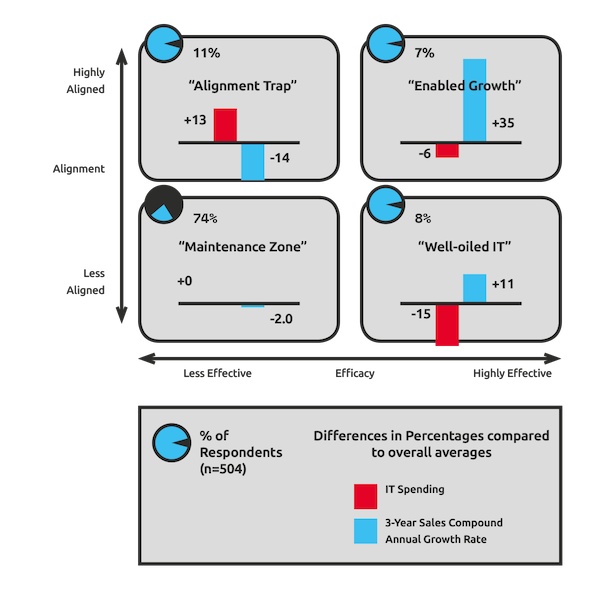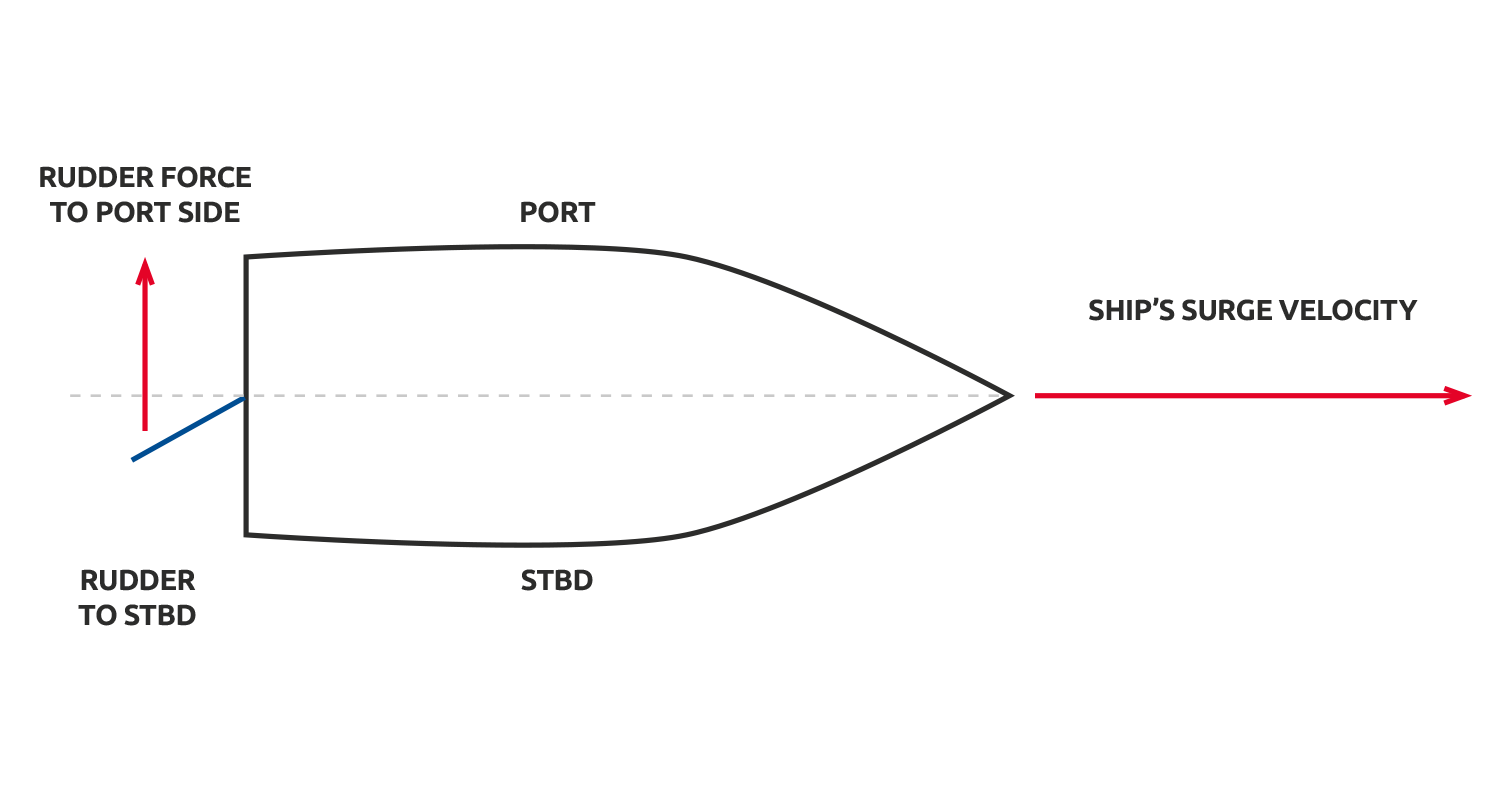Why a new software process won’t fix your delivery effectiveness
Simply aligning your IT capability with your business goals isn’t enough to grow your company. To achieve real IT-enabled growth you’ll need to build on a foundation of technical excellence and thanks to DORA that’s something you can now actually measure.
This article was originally published in the first issue of DevOps Culture Magazine.
In 2007 MIT Sloan Management Review published an article titled Avoiding the Alignment Trap in IT. In it the authors set out the results of a survey of more than 500 senior business and technology executives from around the world. What they found was that most companies were struggling to harness their IT capability to achieve growth strategy.
Analysis of the respondents clustered on two main axes: how aligned the IT organization was with the business needs, and how effective the IT organization was at delivering technology.

Most companies (71%) fell into what the authors termed the Maintenance Zone, where the executives believed that the IT function was neither highly aligned or highly effective. These companies spent average amounts on IT, and had mostly average financial results. The IT spend in these companies is intended to do little more than keep the lights on.
Companies that had IT functions that were highly aligned with business priorities, but not very effective, fell into the Alignment Trap. These companies spent 13% more than average on IT, but their 3 year growth rates were 14% lower than average.
The companies whose IT function was working well (the right side of the model) all had better financial returns1. Companies with a well-oiled IT function spent 15% less than average, and those who were highly aligned, and highly effective, outperformed the growth average of their peers by 35%.
The First Move Is Critical
What the authors had discovered is that organizations don’t become high performing by starting with alignment improvements. Rather, only by improving delivery performance first was it possible to achieve IT Enabled Growth.
“Contrary to conventional wisdom, the path to IT-powered growth lies first in building high effectiveness and only then ensuring that IT projects are highly aligned to the business.”
If we reframe this in terms of a nautical analogy we might better understand why:
- Maintenance Trap organizations are drifting at sea. These companies are treading water.
- Highly Effective organizations are All Engine, No Rudder. They can move fast, but not necessarily in the direction the business needs.
- Organizations caught in the Alignment Trap are All Rudder, No Engine. Lots of steering, but no forward momentum.
- High Performing organizations are powerboats, they can go where they want and they get there fast.

Considered like this it is unsurprising that the authors discovered the Alignment Trap. Once an IT organization has its full focus on business needs it becomes harder to make the strategic investments in better, simpler technologies and approaches.
“Aligning a poorly performing IT organization to the right business objectives still won’t get the objectives accomplished,” says Richard F. Connell, CIO of Selective Insurance Group.
Digital Transformation
Given this information, it is instructive to look at how many companies begin their digital transformation by reorganizing the business to include IT functions. Adopting agile organizational models such as SAFe or the Spotify Model will certainly help ensure that plans and priorities are active decisions. In short, they can solve an alignment problem in an organization.
However, the Alignment Trap highlights that putting the business in the hands of a poorly performing IT organization will result in poor outcomes. For this model to work you must have technical leadership setting clear technical strategies based on strong business-cases.
“Even companies that don’t consider their IT organizations highly aligned were spending 15% less than average, and their growth rates were 11% higher. These are numbers that justify considerable investment in pursuing effectiveness.“
These findings make it clear that pursuing technical excellence is not only the first step to delivering IT Enabled Growth, but also an end in itself.
Technical Excellence
The DevOps Research coming out of DORA provides an even stronger case for why that might be2. What Nicole Forsgren and her team has found is that when taken together Lean Product Management (Alignment) and Continuous Delivery (Effectiveness) are predictive of Organizational Performance.
All the data points towards a single key finding - that technical excellence is foundational. But, how can we measure the progress? Helpfully, DORA again provides insight into strong predictive measures of IT performance which work across industry and sector. These four measures, taken together, can help determine your progress:
- Deployment Frequency
- Lead Time for Changes
- Change Failure Rate
- Mean Time To Recovery (MTTR)
These metrics are incredibly easy to measure. In fact, you probably already have this data in your change management systems, version control logs and defect databases. So, what’s stopping you?
Footnotes
-
This data continues to be supported by the research in The State of DevOps reports. ↩
-
For more information: devops-research.com ↩
Published: Dec 4, 2018
Updated: Jul 5, 2024


